|
THE
ROYAL YACHT BRITANNIA
ABOUT -
CIRCUMNAVIGATION
- DONATE
- CONTACTS - FOUNDATION -
HOME - A-Z INDEX
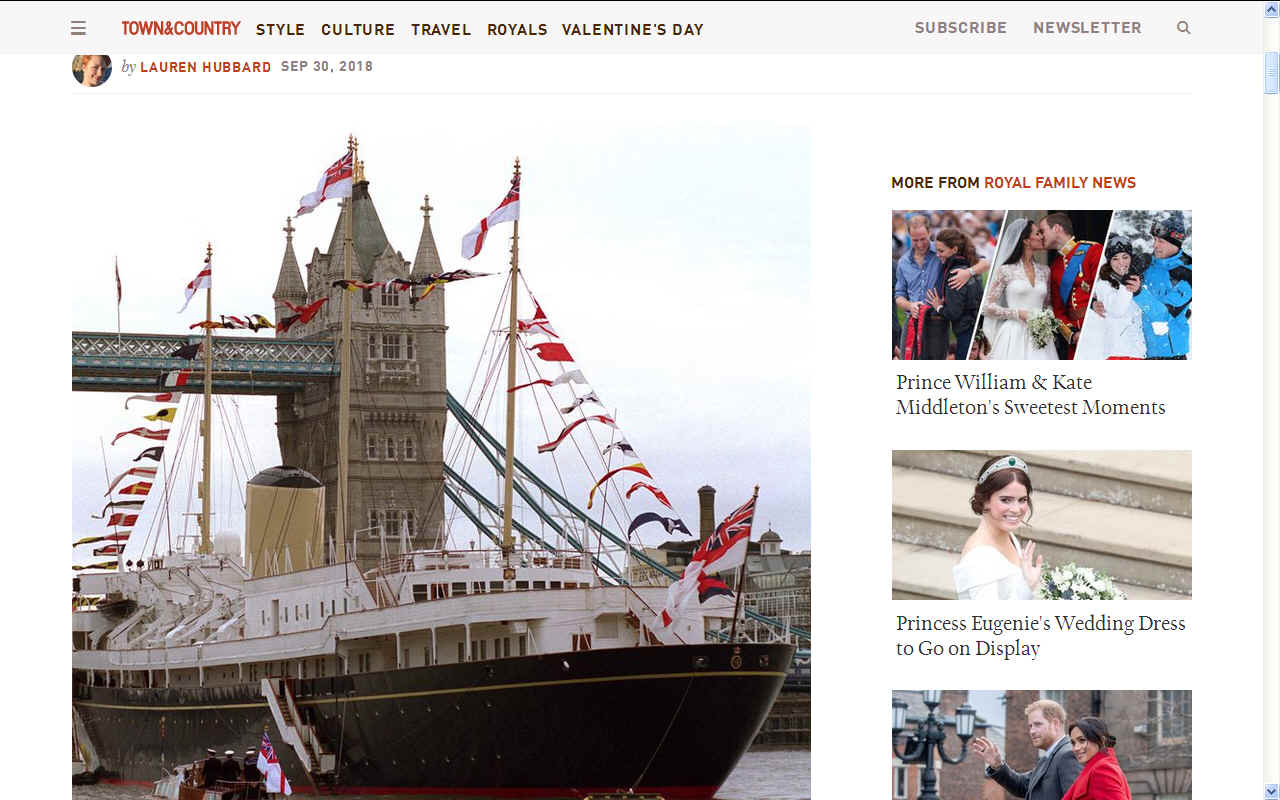
LONDON,
TOWER BRIDGE
- The Royal Yacht Britannia drew a lot of attention in days
gone by when in port. But these days a ship of such design and
proportions might be seen as a contributor to global warming,
tending to offset any good that the occasional trade envoy or
goodwill mission might achieve.
A
lot has been written and said about the British
Queen lobbying for a new state yacht and we wonder if that
would be wrong where a solid business case could have been
made out by herself, Prince Philip, any Buckingham Palace
adviser or indeed, member of parliament. According to the 1689
Bill of Rights, any person aggrieved by a decision of her
Parliament (and that includes any citizen, her ministers,
local authorities and the armed forces) may lobby the head of
state (King or Queen) about any matter where there is no
effective remedy elsewhere. It must be therefore that the
Queen might make her views known, or they might not properly
be taken into consideration during budget cuts.
In
days gone by the sight of the Royal
Yacht Britannia drew a lot of attention from the press and
visiting dignitaries, but in a modern age of the internet, the
media scrum focuses more on gossip than exports. It is thus unlikely
that any multi-million pound ship could possibly recover the
cost of build and operations, unless the Royal
Yacht itself was something special in technological terms,
and in that, the proposed replacements most certainly are not.
The proposed replacements reveal no climate change features,
as in low carbon fuels or harvesting energy from nature.
The
Queen's Secretary of State for Transport, Chris
Grayling has shown the way forward, according to Her
Majesty's Government with Maritime
2050. Armed with this new information we agree with Her
Majesty that she is entitled to include her thinking, reliant
on those she has appointed to carry out the administration of
the United Kingdom to the best of their abilities.
Might we look forward then to the first ever low carbon Royal
Yacht?
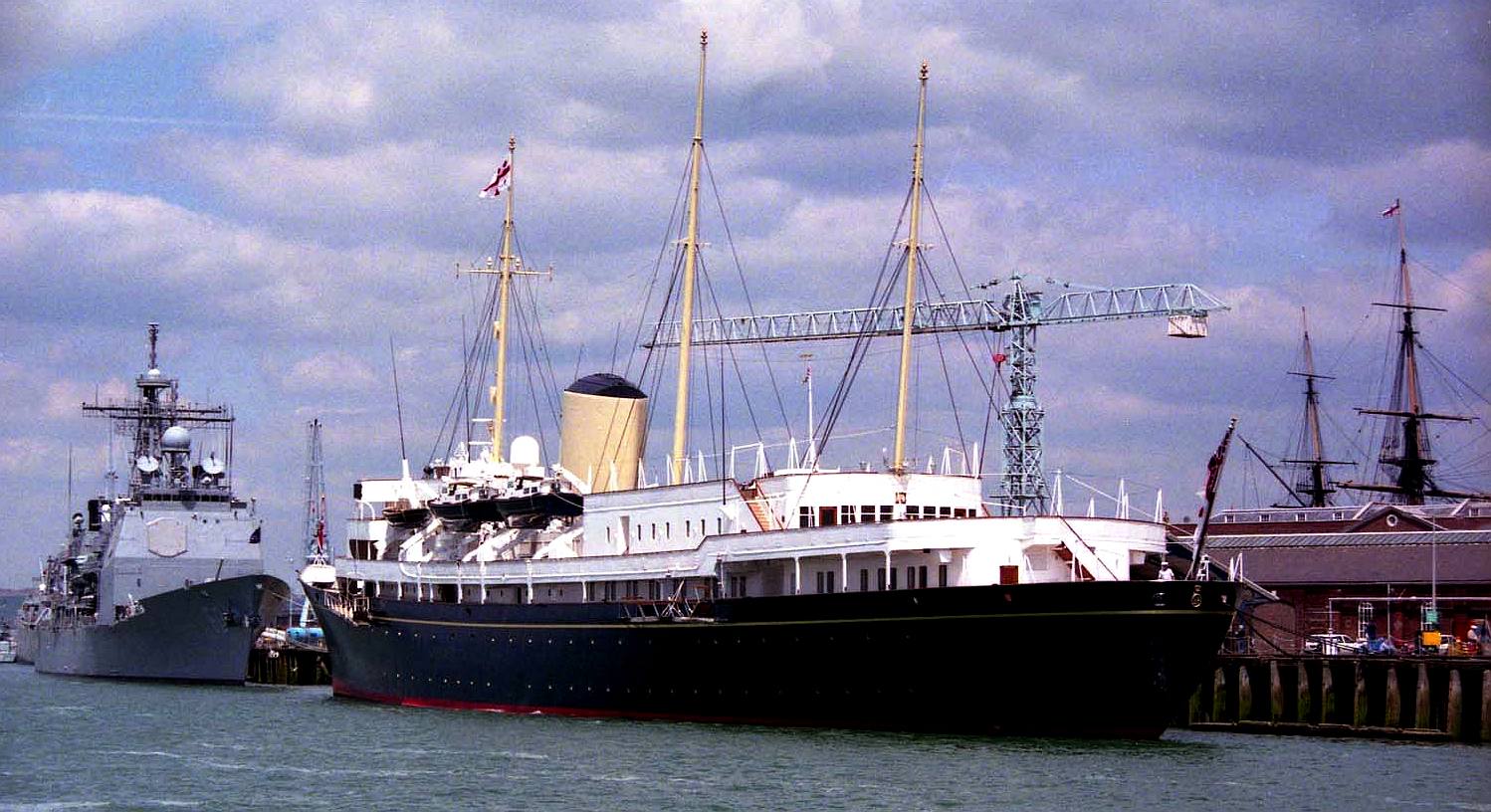
GUERNSEY
PRESS - December 29 2018 - Queen lobbied for replacement Royal
Yacht Britannia, archive files show - Buckingham Palace
officials were worried about the representations to Whitehall
being made public.
The
Queen’s desires for a Royal
Yacht Britannia replacement were made known to government,
official files show.
The monarch was said to “naturally very much welcome” a
new vessel for the 21st century after it was announced the
floating Royal residence would be decommissioned.
Buckingham Palace officials were worried about the
representations to Whitehall being made public, according the
letter from the Queen’s
deputy private secretary Sir Kenneth Scott.
The note, dated May 5 1995, came around a year after John
Major’s government announced the yacht would be
decommissioned but before it finally ended service in 1997.
Addressed to civil servant Richard Williams, who was attached
to the Cabinet Office, the message from Sir Kenneth reads:
“I have deliberately taken a back seat in recent
correspondence, since the question of whether there should be
a replacement yacht is very much one for the Government and
since the last thing I should like to see is a newspaper
headline saying ‘Queen Demands New Yacht’.
“At the same time, I hope it is clear to all concerned that
this reticence on the part of the Palace in no way implies
that Her Majesty is not deeply interested in the subject; on
the contrary, The
Queen would naturally very much welcome it if a way could
be found of making available for the nation in the 21st
Century the kind of service which BRITANNIA has provided for
the last 43 years.”
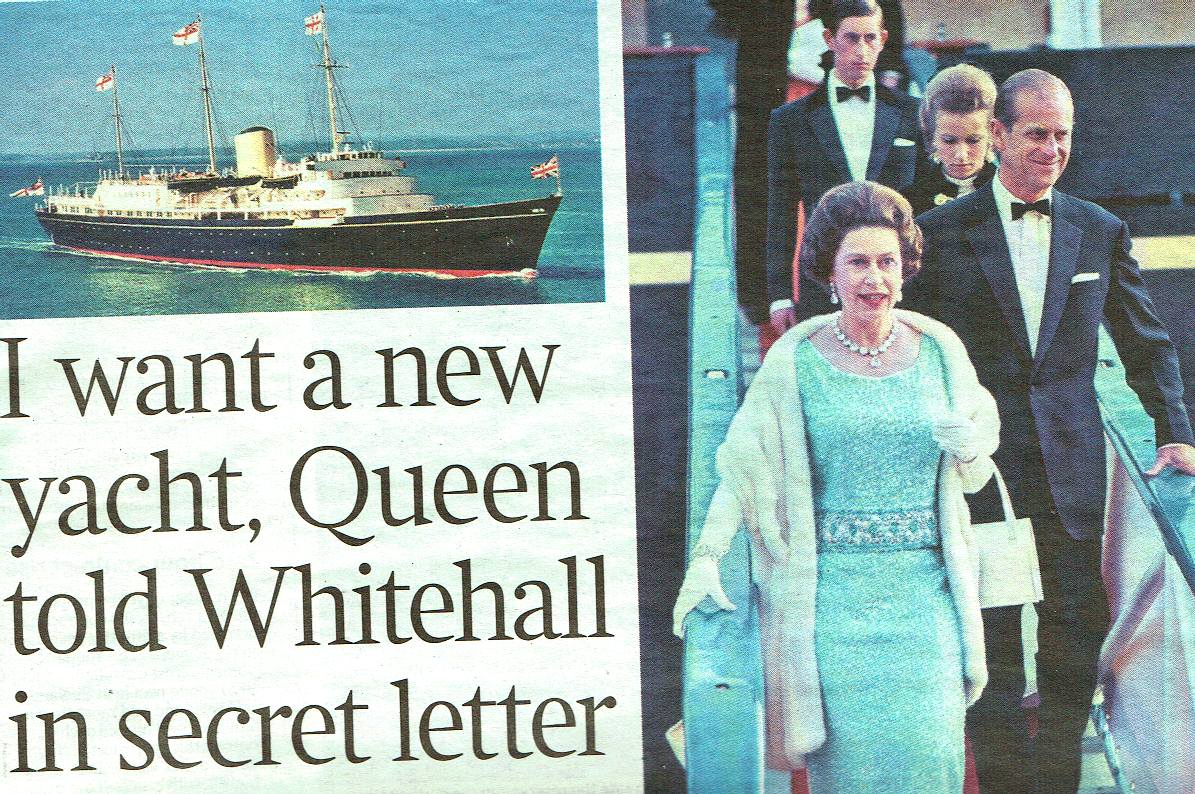
Professor
Murphy, who studies British and Commonwealth history, said:
“It’s saying ‘we don’t want to appear to be lobbying
you but the Queen
hopes you can sort something out’.
“The Palace were keen to keep the issue alive.”
The Royal
Yacht Britannia was in service from 1954 to 1997, traveling
more than a million
nautical
miles.
In an uncommon display of public emotion, the Queen
was pictured wiping away tears when the vessel was finally
decommissioned.
It is now is now berthed in Edinburgh and visited by hundreds
of thousands of tourists each year.
The note also shows Prince
Philip wanted Britannia dismantled and the fittings
installed in a new vessel.
It reads: “The Duke
of Edinburgh, who takes a close interest and has given the
matter a good deal of thought, has come to the conclusion
that, however attractive the other options, the best solution
for BRITANNIA herself after decommissioning is for her to be
broken up.
“The arguments for this would of course be strengthened if
it were decided to build a replacement yacht which could
incorporate much of BRITANNIA’S fittings.”
The most recent attempt to revive the idea of a replacement
came in 2017, when 50 MPs
suggested launching a new national lottery to help raise £120
million
for the project.
They argued the UK “needs and deserves a floating royal
palace” in the post-Brexit
era to host meetings and exhibitions showcasing British
business and humanitarian work.
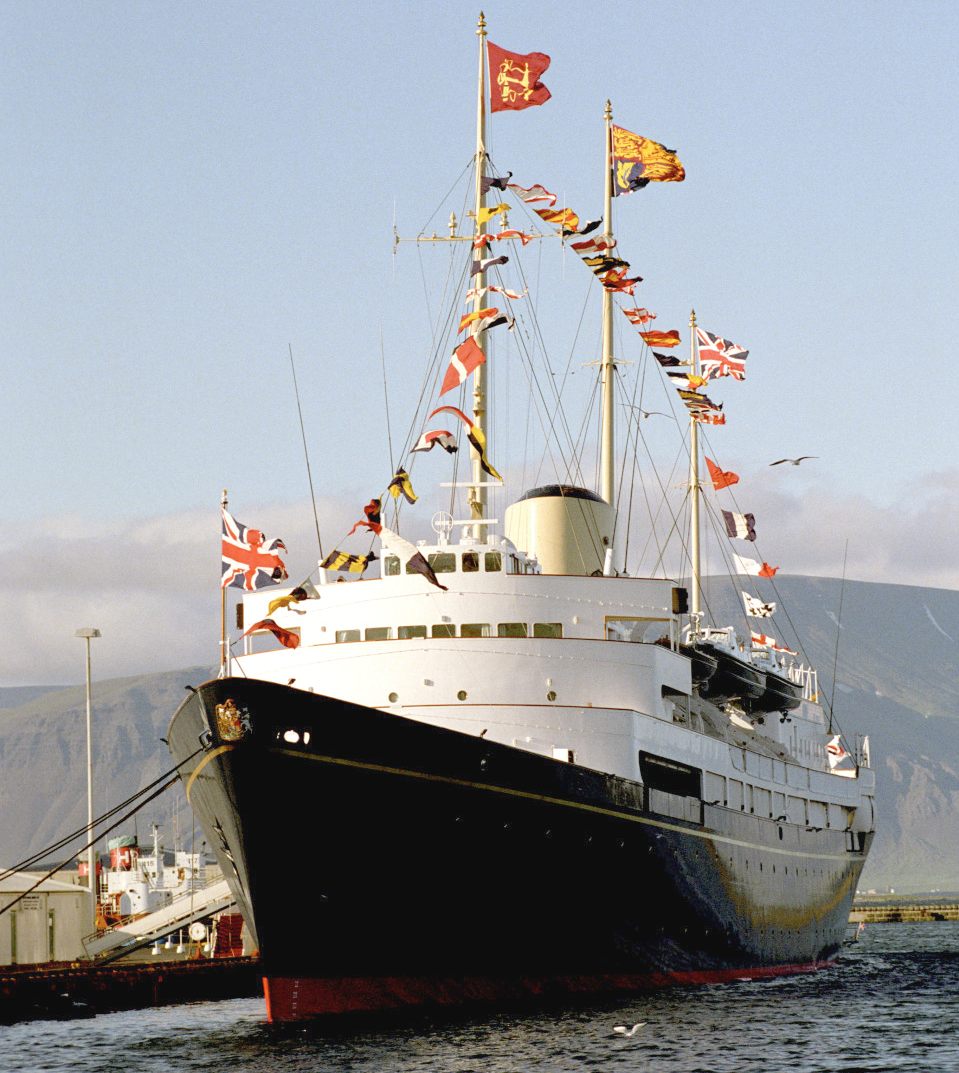
Britannia
sailed on her maiden voyage from Portsmouth to Grand Harbour,
Malta, departing on 14 April and arriving on 22 April 1954.
Britannia was decommissioned on 11 December 1997. Britannia
was designed to be converted into a hospital ship in time of
war, although this capability was never used. In the event of
nuclear war, it was intended for the Queen and Duke of
Edinburgh to take refuge aboard Britannia off the north-west
coast of Scotland.
A
ZERO CARBON FUTURE
Zero
carbon ships and boats are vessels that use renewable
energy to power
themselves through the water, no matter what the type of ship.
Before the advent of coal
powered steam ships, sailing (tall ships) were all green and
non polluting in terms of climate
change.
Reciprocating piston steam engines led to steam turbines with the famous
Turbinia from Charles
Algernon Parsons. Then
came diesel engines and worst of all
nuclear powered submarines
and aircraft
carriers, none of which is ultimately sustainable for a
truly circular economy.
Whereas our economies are reliant on
cheap ocean transport for international trade - something that
we take for granted with globalization; ignoring the harm that
the burning of fossil fuels is causing.
That said, MARPOL,
marine anti-pollution legislation is beginning to bite with LNG
powered ships kicking off a move to cleaner burning internal
combustion engined leviathans. The fact is that cargo
ships are still the most efficient way of moving goods around
the world and we cannot do without them - so must work toward
vessels that are totally clean running, while allowing fleet
operators to reap the rewards of current investments so that
forward profits may be invested in zero carbon transport. See Maritime
2050 from Chris
Grayling.
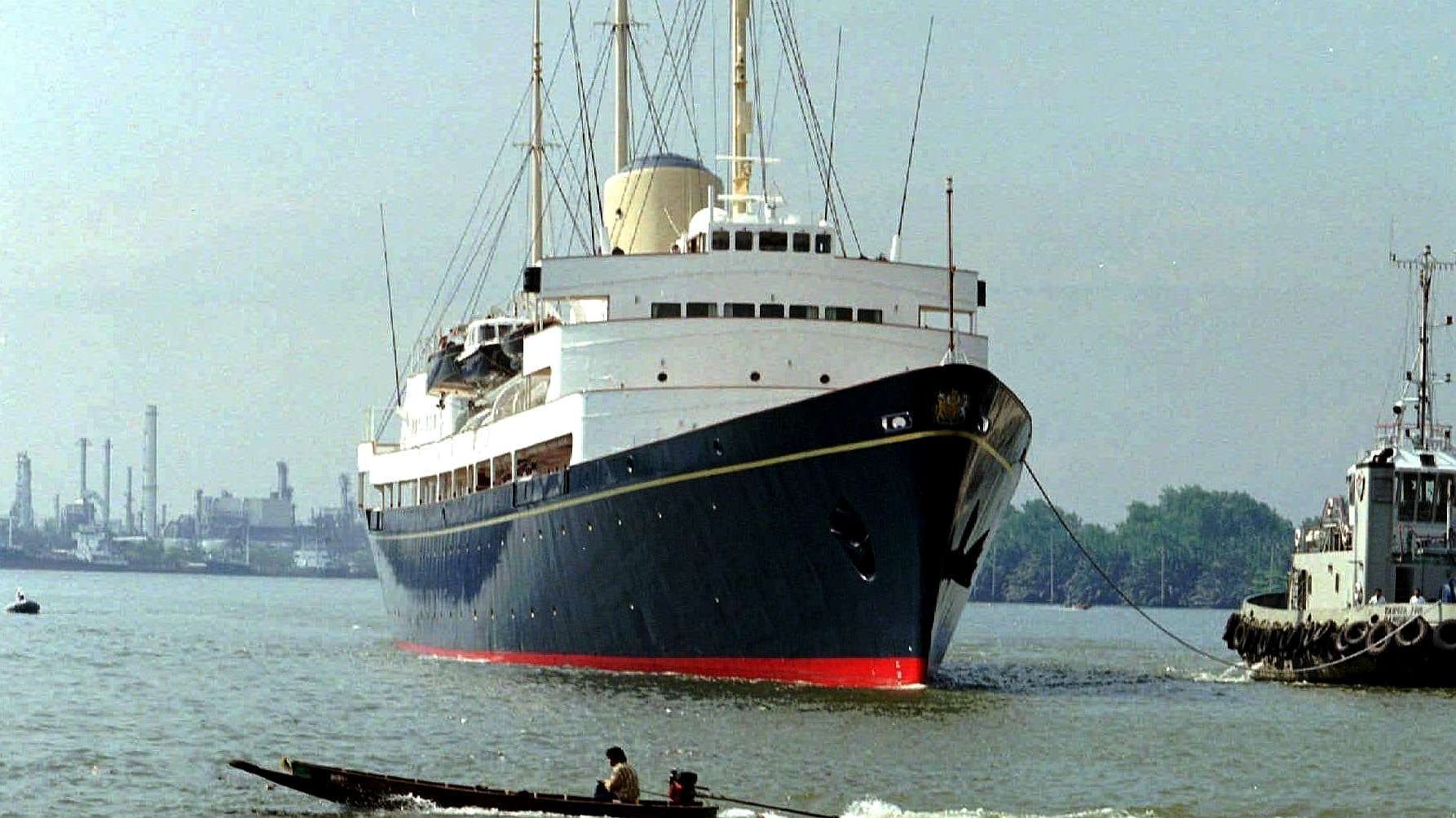
HMY
Britannia was built at the shipyard of John Brown & Co.
Ltd in Clydebank, West Dunbartonshire. She was launched by
Queen Elizabeth II on 16 April 1953, and commissioned on 11
January 1954. The ship was designed with three masts: a
133-foot (41 m) foremast, a 139-foot (42 m) mainmast, and a
118-foot (36 m) mizzenmast. The top aerial on the foremast and
the top 20 feet (6.1 m) of the mainmast were hinged to allow
the ship to pass under bridges.
TOWN & COUNTRY MAGAZINE
SEPTEMBER 30 2018
The royal family has a long history of seafaring - the first official royal yacht was the HMY Mary (HMY stands for His or Her Majesty's Yacht), gifted to Charles II by the Dutch in 1660. In fact, over the centuries the monarchy has utilized 83 royal yachts, including the most recent, the HMY Britannia.
Often referred to as the last royal yacht, the Britannia was decommissioned in 1997, and despite some efforts, there are no signs of a new one in the near future. Though its seafaring days may be behind it, the Britannia remains an important artifact and a peek behind the curtain of royal life. Below, a few of its most notable moments throughout history.
It was the first royal yacht designed for ocean travel.
The ship was built by John Brown & Co at the same shipyard in Clydebank, Scotland where famous liners
Queen Elizabeth and
Queen Mary were constructed. With 12,000 horsepower, the ship could travel at a maximum 22.5 knots, ideal for ocean-going diplomacy. Prior to its launch,
the royal family used ships from the Royal Navy or even passenger liners for the overseas portions of the royal tour.
In its 44 years of service, the HMY Britannia traveled around 1.1 million miles.
It was commissioned just two days before the death of King George VI.
The King was already in failing health by the time the designs for the HMY Britannia were submitted, and the hope was that traveling might help alleviate some of his symptoms. However, just two days after the John Brown shipyard in Clydebank, Scotland received the order the King passed away on February 6, 1952.
It would take just over a year for the ship to be completed, during which its name remained a secret. It wasn't announced until the ship's official launch in April of 1953, less than two months before the Queen's coronation. Elizabeth cracked a bottle of wine (at the time champagne was considered too extravagant for the launch of a ship) and announced, "I name this ship Britannia… I wish success to her and all who sail in her."
It was created to double as a hospital.
When Britannia was first envisioned, less than a decade after the end of
World War
II, the designers sought to make it as functional as possible, crafting a space that could be converted from an ocean-going royal residence to a seafaring hospital during wartime. The main veranda was spaced and re-enforced so that it could support a helicopter landing and the laundry was made much larger than a standard naval vessel to accommodate the potential patients. Though the ship was never actually put to that purpose, it was pressed into service on a rescue mission to help evacuate
European nationals from South Yemen in 1986.
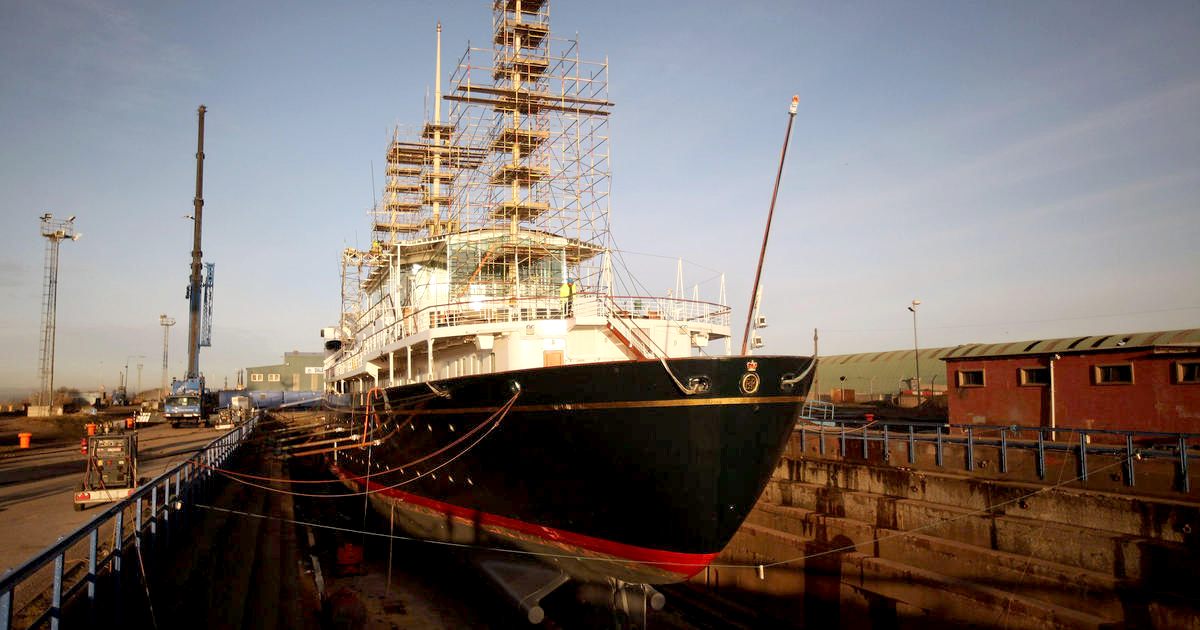
The ship was home to a lot of history.
Long before it became a museum, the Britannia had an eye for history. The gold and white binnacle housed on the ship's veranda deck was originally part of the HMY Royal George, a royal yacht that served
Queen
Victoria. Likewise, some of the Queen's bed linens were originally made for Victoria's bed aboard one of the previous royal yachts. Britannia's steering wheel was lifted from her namesake, the racing yacht HMY Britannia, built in 1893 for King Edward VII.
It was redesigned to be less opulent.
Despite the sense of luxury that the term "royal yacht" inspires, the Queen and
Prince Philip were actually concerned when they began overseeing the project in 1952 that the original interior design plans by McInnes Gardner & Partners were too lavish for a country still recovering from the war. The interiors were ultimately redesigned by Sir Hugh Casson and received very minimal updates throughout her 44 years of service.
But it still had homey touches—by royal standards.
Suffice to say that even low-key royal living is a fairly high class. In addition to the 56-seat State Dining Room, which hosted luminaries including
Winston
Churchill, Noel Coward, Nelson
Mandela, and multiple US Presidents, the ship also sported a formal staircase where the Queen would greet guests, separate bedrooms and sitting rooms for both Her Majesty and the Duke of Edinburgh, and a phone system designed to match the unique configurations of Buckingham Palace's telephones.
In the early years of the Britannia's life it was also home to the Queen's
Rolls-Royce Phantom V which was hoisted and lowered from a special garage compartment at port so that the Queen could drive her own car at each location. The space was ever so slightly too small, forcing the bumpers to be removed in order to get it into the garage without damage and then refitted when the car was removed. Ultimately Elizabeth began using cars provided for her at port instead and the garage was converted into a storage area for beer.
The steering crew couldn't see where they were going.
Life on board the HMY Britannia was far from typical for her crew. To begin with, due to the prestige and pressure of the position, the commanding officer of the royal yacht was always a flag officer, most commonly a Rear Admiral, although the first two to serve were Vice Admirals and Britannia's final CO was a Commodore.
While working, the crew reportedly used hand signals to communicate rather than shouting orders to maintain a sense of quiet and clam for the royal residents. It was also the last ship in the royal navy where the crew members slept in hammocks, a practice that they maintained until 1973.
Perhaps the most unusual element of the ship's functioning, though, was the steering. While on most ships, the steering wheel sits on the bridge, overlooking the front of the boat, Britannia's was on the deck below in the wheelhouse, which meant that the yachtsmen who were actually doing the steering couldn't see where they were going. The crew got around this rather surprising pitfall by using voice pipes from the bridge to confer navigational orders.
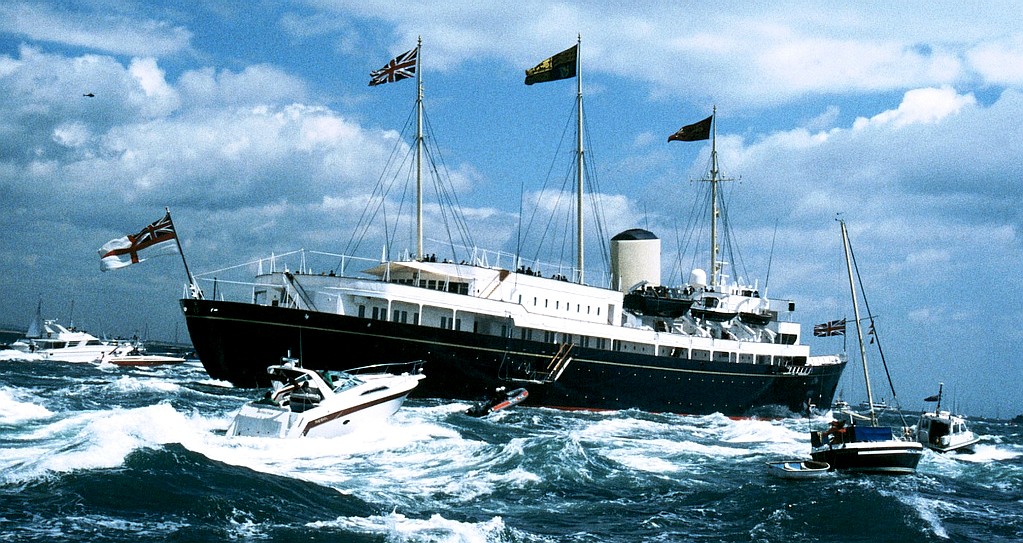
It was a royal honeymoon essential.
No fewer than four royal couples celebrated their honeymoons in the HMY Britannia's honeymoon suite (the only room onboard with a double bed.) Princess Margaret started the tradition in 1960 for her Caribbean honeymoon with Anthony Armstrong-Jones, a quiet, formal affair where dinners were taken in full evening dress every night. Things didn't go quite as smoothly for Princess Anne on her honeymoon with
Captain Mark Phillips in 1973—storms and 20-foot waves left the couple stricken with seasickness for the first week of their Caribbean cruise. Prince Charles and Princess Diana famously spent their 1981 honeymoon on a Mediterranean cruise aboard the yacht. The crew managed to duck the press so efficiently they garnered the nickname "the ghost ship." And the final royal honeymoon aboard the Britannia was taken by Prince Andrew and
Sarah
Ferguson, Duchess of York in 1986 when the couple traveled around the Azores.
And a family vacation spot.
In addition to her diplomatic duties on royal tours and her service as a post-wedding retreat, the Britannia was also a vessel for family vacations. During the summer months, the royal family would often take off on what became known as the aptly named Western Isles tour, cruising around the western isles of Scotland. During the trip, the family would play games and have barbecues on the islands. The stairway off the veranda was sometimes even converted into a waterslide for the younger royals. The tour often included a stop off at the Castle of Mey to visit the Queen Mother and then making berth in Aberdeen so that the Queen could travel to her favorite summer home, Balmoral.
The Queen openly wept when HMY Britannia was decommissioned in 1997.
With so many memories around the yacht, it's not hard to understand why the decommissioning of the Britannia was upsetting for the royal family. Though plans were initially drawn up for a replacement yacht, the government ultimately determined not to fund the effort. After the Queen officially took her leave of it in 1997, the ship was placed in the port of Leith in Scotland where it serves as a floating museum and events venue. All of the clocks on board remain stopped at 3:01, the exact time that Her Majesty disembarked for the last time.
It was used for a reception for Zara Phillips before her wedding.
Though it's no longer used as their private vessel, the Britannia's connection to the royal family didn't end in 1997. In 2011 on the night before her wedding, the Queen's oldest granddaughter
Zara Phillips contracted the ship for a reception. Though her grandmother wasn't in attendance (the Queen reportedly hasn't been back on the Britannia since 1997) Zara celebrated her upcoming marriage to Mike Tindall onboard along with her mother and her cousins
Prince
Harry, Prince William and
Duchess
Kate, Princess
Eugenie, and Princess
Beatrice.
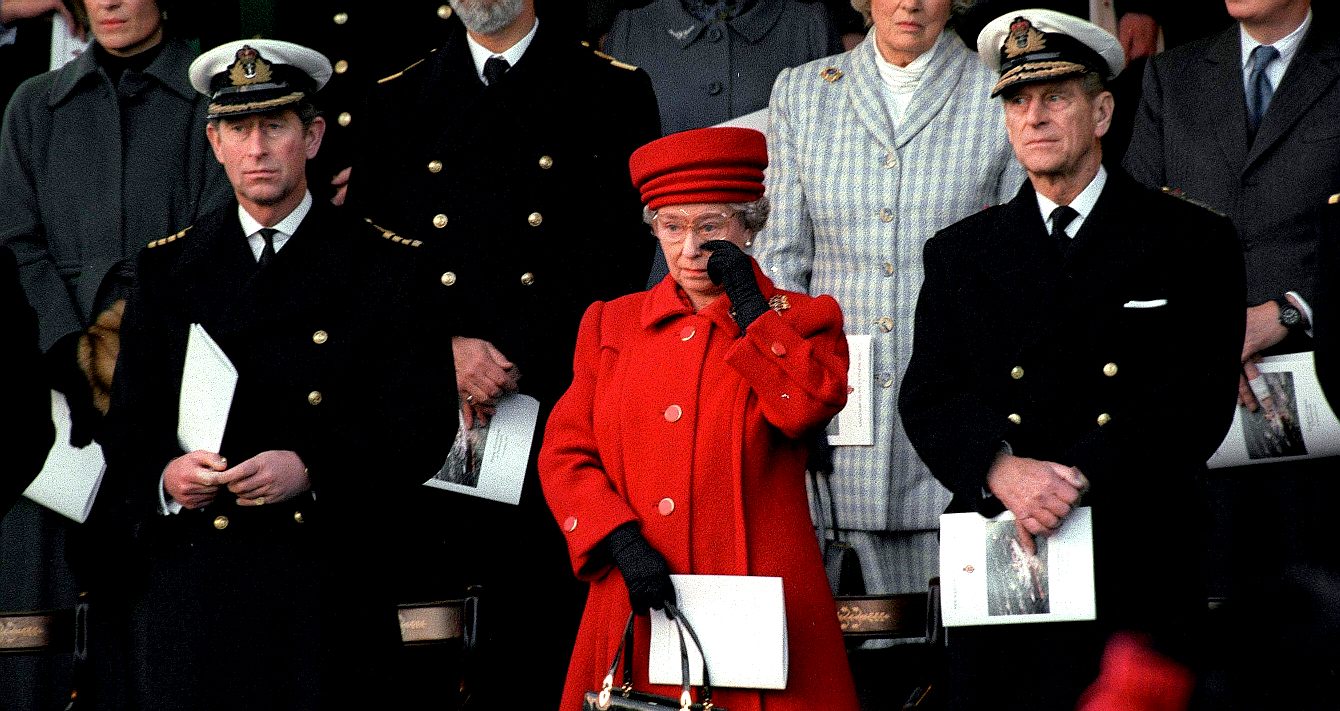
FAREWELL
- Fond memories of the open air and sea, now consigned to a
floating museum of the allure of the ocean, a time when
Britain Ruled the Waves. In an age of globalization that claim
to fame is harder to achieve. These days, physical world
domination is a thing of the past. Today, it is all about
economics, where continued growth is no longer the ideal,
sustainable practices are key.
RETURN
TO NATURE
One
of the first true (blue-water) green ships, was the Planet
Solar that in 2012 set a world first record for a solar
powered circumnavigation.
Other landmark vessels include the Solarsailer, and now there
is a move to wind and
solar assisted cargo ships, some of
which are fitted with solar panels.
Eventually,
it is hoped that internal combustion power can be replaced
altogether with wind and solar powered ships like the SeaVax
and Bluefish
concepts that are under development (subject to funding). This
will only happen with the support of the people and the
political will to change.
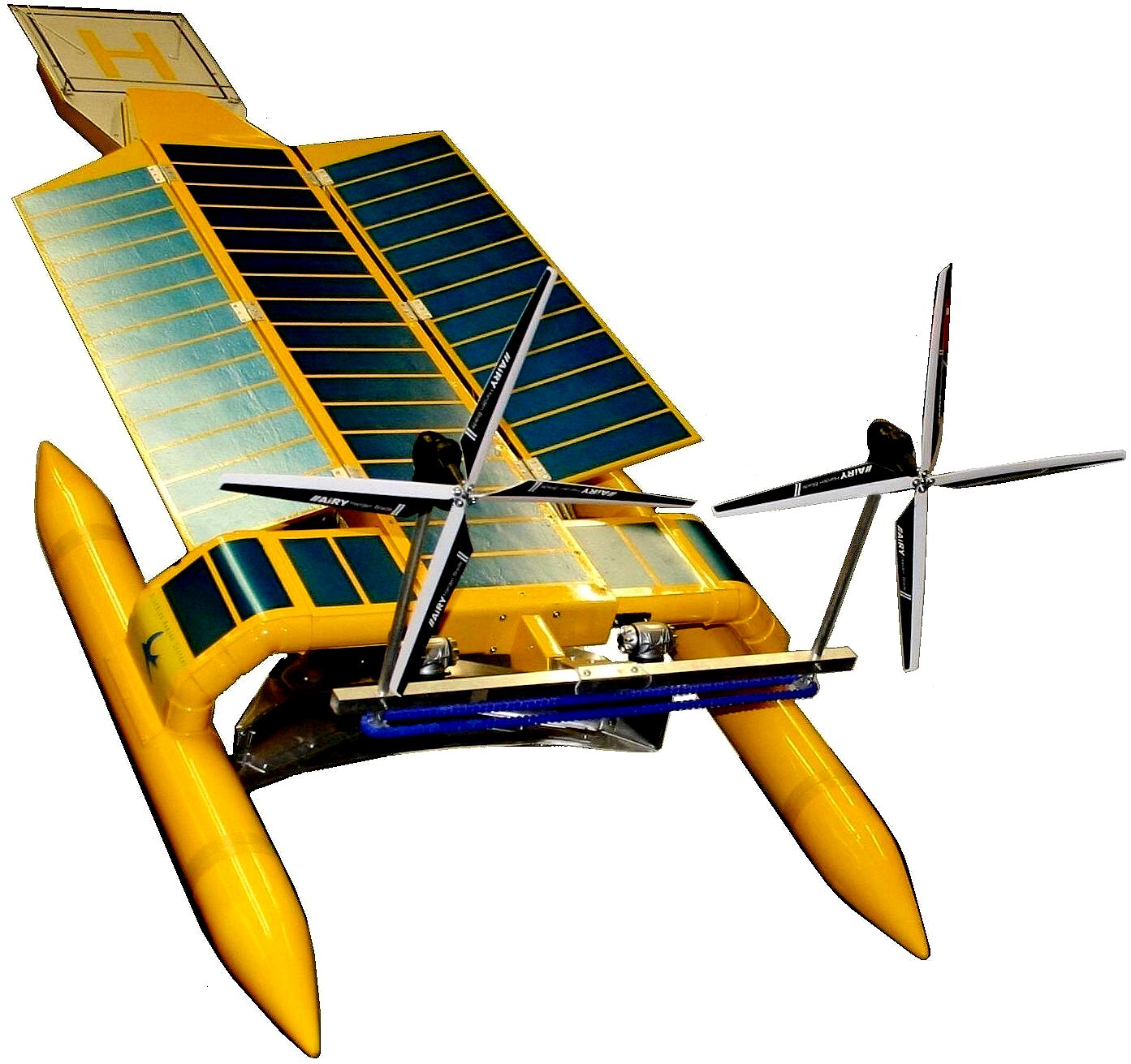
SOLAR
POWERED VESSEL - This vessel is designed to operate in fleets
to target ocean waste before it settles on the ocean floor
where nobody can recover it. There is nothing like it in
existence today, though other ideas for trapping plastic waste
are being developed, such as that of Boyan
Slat and the Seabin.
MAIN
BLUE GROWTH AREAS
5.
Ocean Regeneration - cleaning our oceans to preserve the
resource and cleanse the toxic food chain
6.
Aquaculture - now generates around 50% of world produce,
mostly subject
to wild fish feed
7.
Ocean Energy - offshore wind and wave energy for clean
power
8.
Biotechnology - Identifying, harvesting and producing
medicines
9.
Coastal Tourism - To engage the public in ocean matters
and reduce air travel
10.
Green Ships - Cargo and cruise ships that are cleaner,
preferably zero carbon
SIX
STEPS TOWARD A COOLER PLANET
1.
TRANSPORT:
Phase out polluting
vehicles. Governments aim to end the sale of new petrol, and
diesel vehicles by
2040 but have no infrastructure plan to support such
ambition. Marine transport can be carbon neutral.
2.
RENEWABLES:
Renewable energy should replace carbon-based fuels
(coal, oil and
gas) in our
electricity, heating and transport.
3.
HOUSING: On site micro or macro
generation is the best option, starting with new build homes.
4.
AGRICULTURE: We need
trees to absorb
carbon emissions from a growing population, flying, and to build
affodable new homes. Reducing food waste and promoting
less energy intensive eating habits such as no meat Mondays.
5.
INDUSTRY: Factories should be aiming for solar heating and
onsite renewable energy generation.
6.
POLITICS: - National governing bodies need to adopt
rules to eliminate administrative wastages, to include scaling
down spending on war machines, increasing spend on educating the public and supporting sustainable
social policies that mesh with other cultures. One way of
pushing this agenda is total transparency
in Governments and Courts as per United
Nations SDG 16. This would tend to prevent corrupt
politicians and civil servants from pursuing unlawful agendas.
LINKS
& REFERENCE
https://www.townandcountrymag.com/society/tradition/a23456210/royal-yacht-britannia-history/
https://www.theguardian.com/travel/2006/dec/20/cruises.green
https://phys.org/news/2018-05-global-tourism-carbon-footprint-quantified.html
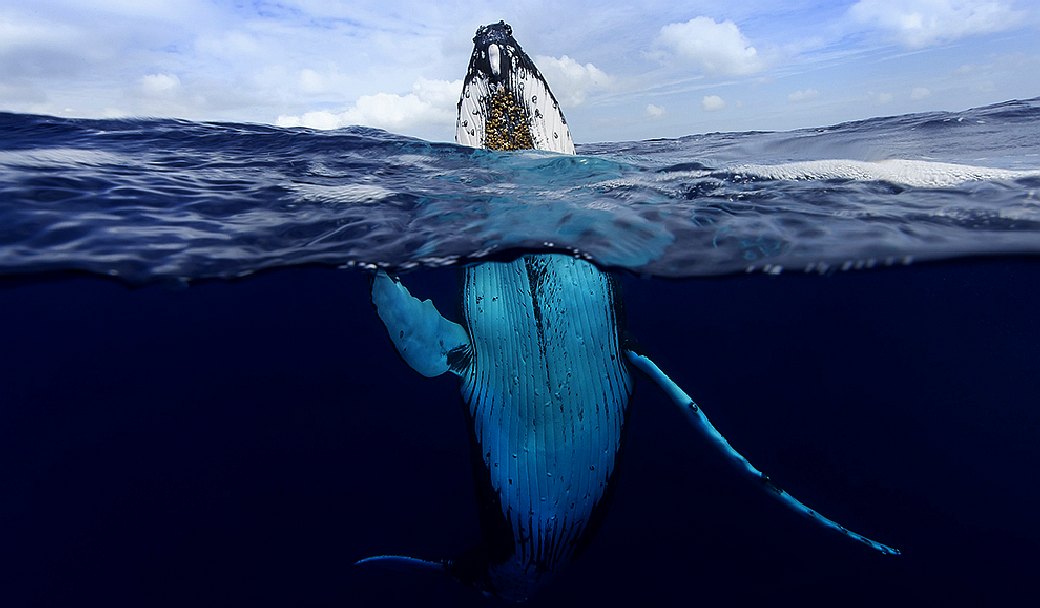
MARINE
LIFE - This humpback whale is one example of a magnificent
animal that is at the mercy of human
activity. Humans are for the most part unaware of the harm their fast-lane
lifestyles are causing. We aim to change that by doing all we
can to promote ocean
literacy.
This
website is provided on a free basis as a public information
service. Copyright © Cleaner
Oceans Foundation Ltd (COFL) (Company No: 4674774)
2019. Solar
Studios, BN271RF, United Kingdom.
COFL
is a charity without share capital.
|








